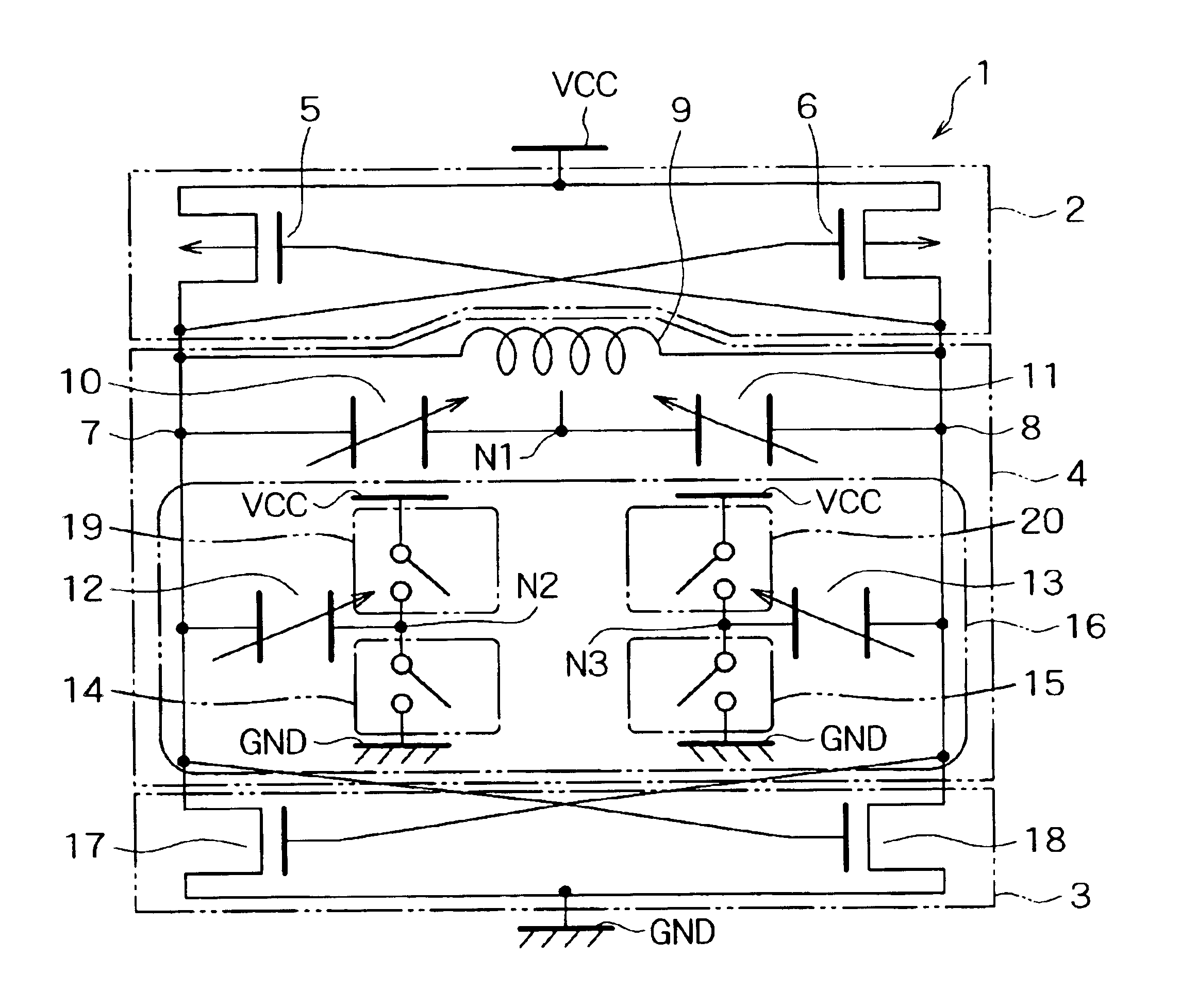Voltage controlled oscillator with switched tuning capacitors
- Summary
- Abstract
- Description
- Claims
- Application Information
AI Technical Summary
Benefits of technology
Problems solved by technology
Method used
Image
Examples
Embodiment Construction
[0040]Hereinafter, an embodiment of the present invention will be described in detail with reference to the accompanying drawings. FIG. 3 is an equivalent circuit diagram showing an LC-VCO according to the present embodiment. FIG. 4 is an equivalent circuit diagram showing a varactor device to be used as variable capacitors. FIG. 5 is a graph for showing the dependence of the capacitance of the varactor device on voltage, in which the abscissa indicates the voltage applied between the terminals of the varactor device, or equivalently, the potential of the G terminal to the SD terminal, and the ordinate indicates the capacitance of this varactor device. FIG. 6 is a graph for showing the range of variation in the oscillation frequency of the LC-VCO according to the present embodiment, in which the abscissa indicates the control voltage to be applied to the variable capacitors and the ordinate indicates the oscillation frequency of the LC-VCO. FIGS. 7A to 7F are graphs for showing the ...
PUM
 Login to View More
Login to View More Abstract
Description
Claims
Application Information
 Login to View More
Login to View More - R&D
- Intellectual Property
- Life Sciences
- Materials
- Tech Scout
- Unparalleled Data Quality
- Higher Quality Content
- 60% Fewer Hallucinations
Browse by: Latest US Patents, China's latest patents, Technical Efficacy Thesaurus, Application Domain, Technology Topic, Popular Technical Reports.
© 2025 PatSnap. All rights reserved.Legal|Privacy policy|Modern Slavery Act Transparency Statement|Sitemap|About US| Contact US: help@patsnap.com



